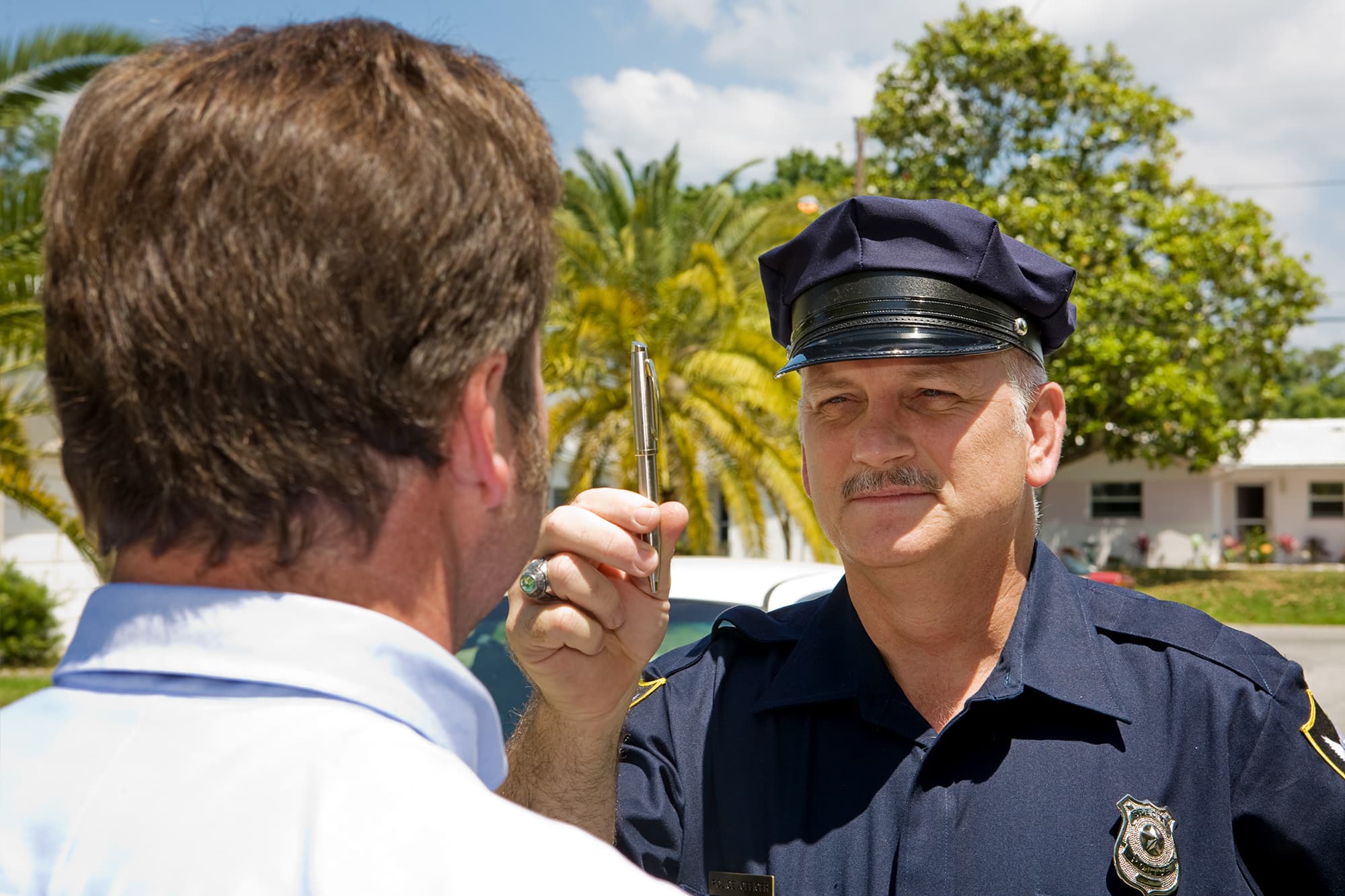After discussing the second phase of DUI Investigations in our previous blog, it’s now time to get into the third and final phase: Pre-arrest screening. An experienced DUI attorney knows how important this phase is to your DUI case. Therefore, they should know common pitfalls that can result in a dismissal and/or favorable result to your case.
The Pre-Arrest Screening Phase: Field Sobriety Tests
Once you have been pulled over, the officer has made contact with you at your vehicle, and believes they have enough suspicion to continue their DUI investigation, they will likely ask you to exit your vehicle to perform field sobriety tests. These tests are commonly used for an Officer to determine whether probable cause exists to arrest you for DUI. There are multiple tests that can be administered, but below we will briefly discuss the most common tests. On each test, the officer is trained to look for “clues” of impairment, which come from not performing the tests as the officer has instructed or demonstrated.
The three most common tests, and the only 3 that are recognized as being “standardized” according to NHTSA, are:
- Horizontal Gaze Nystagmus Test (HGN)
- Walk and Turn (WAT)
- One Leg Stand (OLS)
We will briefly overview each test individually, noting some different clues that an officer will be looking for on each test. It’s important to know that these tests are “standardized” because they were developed and validated through a series of controlled experiments that ultimately resulted in a correlation to the subject’s level of alcohol impairment. An experienced DUI attorney knows to and looks out for any issues in the Officer administering and instructing these tests in a way that invalidates their standardized nature and purpose.
Test #1: Horizontal Gaze Nystagmus (HGN)
The first standardized field sobriety test commonly administered, the Horizontal Gaze Nystagmus test or “HGN” for short, is commonly referred to as the “eye-test.” During this test the officer will observe your eyes and attempt to observe nystagmus while you try to follow a stimulus (usually a pen or finger). The officer should instruct you to move your eyes and eyes only while performing the test. Nystagmus is the involuntary jerking of the eyes as the eyes follow a stimulus. A simplified explanation of this very scientific and rather complex test, is that alcohol and drug impairment causes this involuntary jerking of the eyes (nystagmus). When asked to follow a pen from side to side, if there is no nystagmus, then the eyes will follow and roll naturally like a marble on glass with no jerking. However, if there is nystagmus and impairment, the eyes involuntarily will jerk across while following the stimulus instead of tracking equally. This test can be very hard to see on an officer’s bodycam, in person without proper training, and requires the officer to have specialized training and knowledge to discuss the results in Court. Therefore, while this test is usually always the first test administered, it’s rarely admissible in Court. An officer is trained to look at whether the subject moves their head, instead of only their eyes, whether there is equal tracking of the eyes v. nystagmus, in addition to other clues.
Test #2: Walk and Turn (WTS)
In previous blogs, we also discussed divided attention and how it’s used in a DUI investigation. The second test commonly administered in a DUI investigation is the Walk and Turn. This is a divided attention test where the officer should ask you to stand in the “start position” while they give you instructions on how to perform the rest of the test. Your level of performance on this test begins from the moment the officer puts you in this start position – one foot in front of the other, touching heel-to-toe, with your hands down to your side.
During this test, the Officer should ask that you take 9 steps on a straight line, touching heel-to-toe each step, keeping your arms down to your side, looking at your feet and counting each step. At the end of the first 9 steps, you should be instructed to make a specific turn, and re-perform 9 more steps in the same manner as before. An experienced DUI attorney knows that the Walk and Turn test can be a vital piece of evidence because this test is usually able to be observed on an officer’s bodycam. It’s important that the attorney know how to attack what the officer says happened versus what can be visually seen while the subject is performing the test. An officer is trained to look at whether you can keep your balance in the instruction phase, whether you start too soon, miss heel to toe, or make an improper turn, among other clues.
Test #3: One-Leg Stand (OLS)
The third standardized field sobriety test, the One-Leg Stand, is another divided attention test. This test requires you to stand on one leg, with the other leg raised about six inches off the ground. You should be instructed to look down at your raised foot, keep your arms down to your side, and count out loud to 30 seconds. The officer is trained to look for clues that include swaying, hoping, putting your foot down, and raising your arms for balance.
Because all the tests described above are standardized, they’re supposed to be instructed, administered, scored, and observed the same way each time, regardless of officer or person performing the test. However, because of potential medical, physical, or personal issues, these tests may not be appropriate for every person to perform. An experienced attorney understands that because every case is different, and every person is different, an attack on these field sobriety tests can come in multiple forms. Nevertheless, any attorney should be prepared to attack this third and important phase of a DUI investigation.
Attorney At Law, Managing Partner
Brandon D. Fersten is an esteemed Knoxville attorney practicing DUI, criminal defense, and juvenile law. Known for his empathetic approach and commitment to his clients, he brings a record of favorable case outcomes including dismissals and not guilty verdicts at jury trials resulting in Brandon being recognized as one of the “Top 40 Under 40” in Criminal Defense, U.S. News’ Best Lawyers: “Ones to Watch,” and Super Lawyers’ “Rising Stars”. Brandon’s professional accolades, combined with his passion for justice, position him as a reliable criminal defense advocate in the East Tennessee legal landscape, including Knox County, Blount County, Sevier County, Loudon County, Roane County, Anderson County, Cumberland County, Hamblen County, Monroe County, and McMinn County.




